PHOTO GALLERY: UW Rose Bowls through the Years
The 2020 Rose Bowl marks the 10th time the Wisconsin Badgers have qualified for the prestigious football game in Pasadena, California. The previous nine appearances have produced only three wins but countless memorable moments: from a scoreless debut and a frantic comeback to record-breaking performances and back-to-back titles.
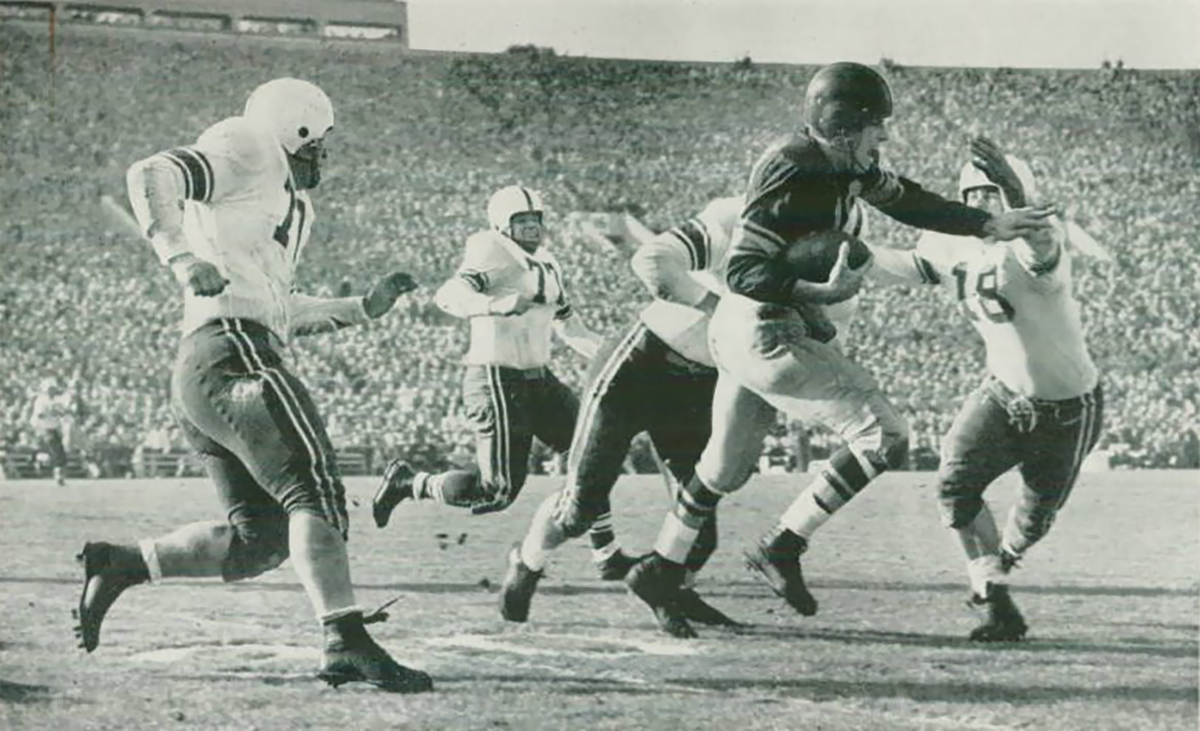
1953: USC 7, Wisconsin 0
The Rose Bowl Game dates back to 1902, but the Badgers didn’t qualify for the “granddaddy of them all” until 1953. Was it worth the wait? As long as you’re not a scoring enthusiast. The USC Trojans blanked the Big Ten co-champion Badgers (pictured in white – and without facemasks) 7-0 in front of a crowd of 101,500 fans. Only the 1922 Rose Bowl featured fewer points, when Washington & Jefferson College and the University of California–Berkeley tied 0-0. The Badgers, led by future Heisman Trophy-winning running back Alan Ameche, had five scoring opportunities inside USC’s 25-yard line but failed to convert any of them. “We played up to our ability,” head coach Ivy Williamson said. “They were just too good for us.”

1960: Washington 44, Wisconsin 8
Wisconsin earned a second Rose Bowl berth in 1960 after winning its first outright Big Ten title since 1912. Could it go any worse than the first? In fact, yes. Big Ten teams had won 12 of their last 13 Rose Bowl matchups (see above for the one loss), and the Badgers entered the 1960 contest as a 6.5-point favorite over the Washington Huskies in their first-ever meeting. But rather than winning by a touchdown, the Badgers lost by five of them, for a final score of 44-8. The 36-point loss is tied for the fourth-largest margin of defeat in Rose Bowl history. The Badgers’ lone scoring highlight was a four-yard touchdown run by fullback Tom Weisner. Many years later, UW head coach Milt Bruhn admitted: “I could sense [the] team I took out there was a little too interested in seeing California.” It’s hard to blame them – especially in January.
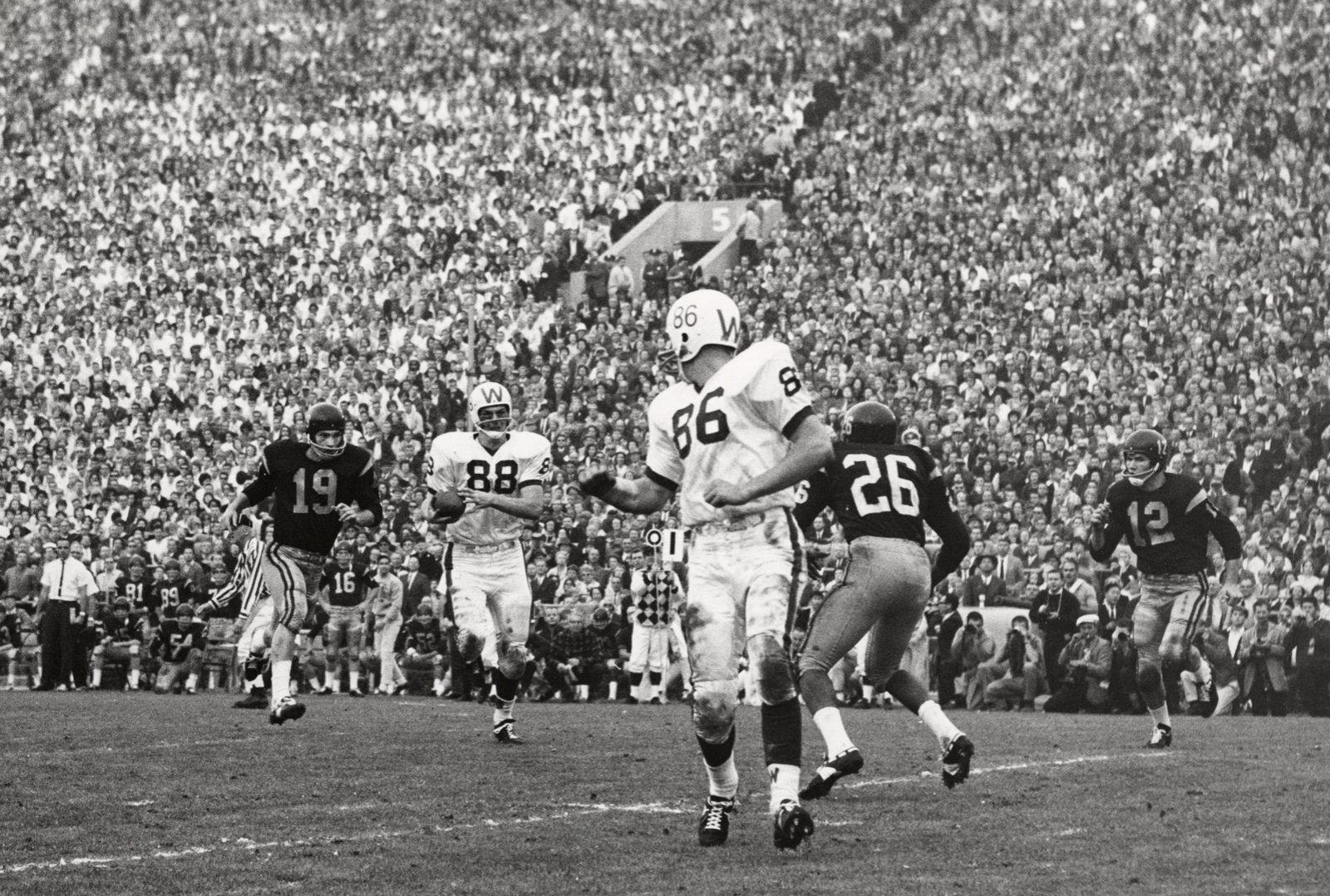
1963: USC 42, Wisconsin 37
Third time’s the charm? Perhaps not, but the 1963 Rose Bowl is regarded as one of college football’s classics. It was the first bowl game to feature the top two teams in the country, though you wouldn’t have known it early on. USC amassed a 42-14 lead by the fourth quarter before a legendary, frenzied Wisconsin comeback. In a span of 12 minutes – led by quarterback Ron Vander Kelen, wide receiver Pat Richter (No. 88, pictured above) and running back Lou Holland – the Badgers rallied for 23 unanswered points and pulled within five. Remarkably, they had an opportunity to take the lead with time expiring, but they couldn’t manage to block or return USC’s final punt. “None of us realized then that we had been in one of the great games of all time,” Holland told the Chicago Tribune in 1993.
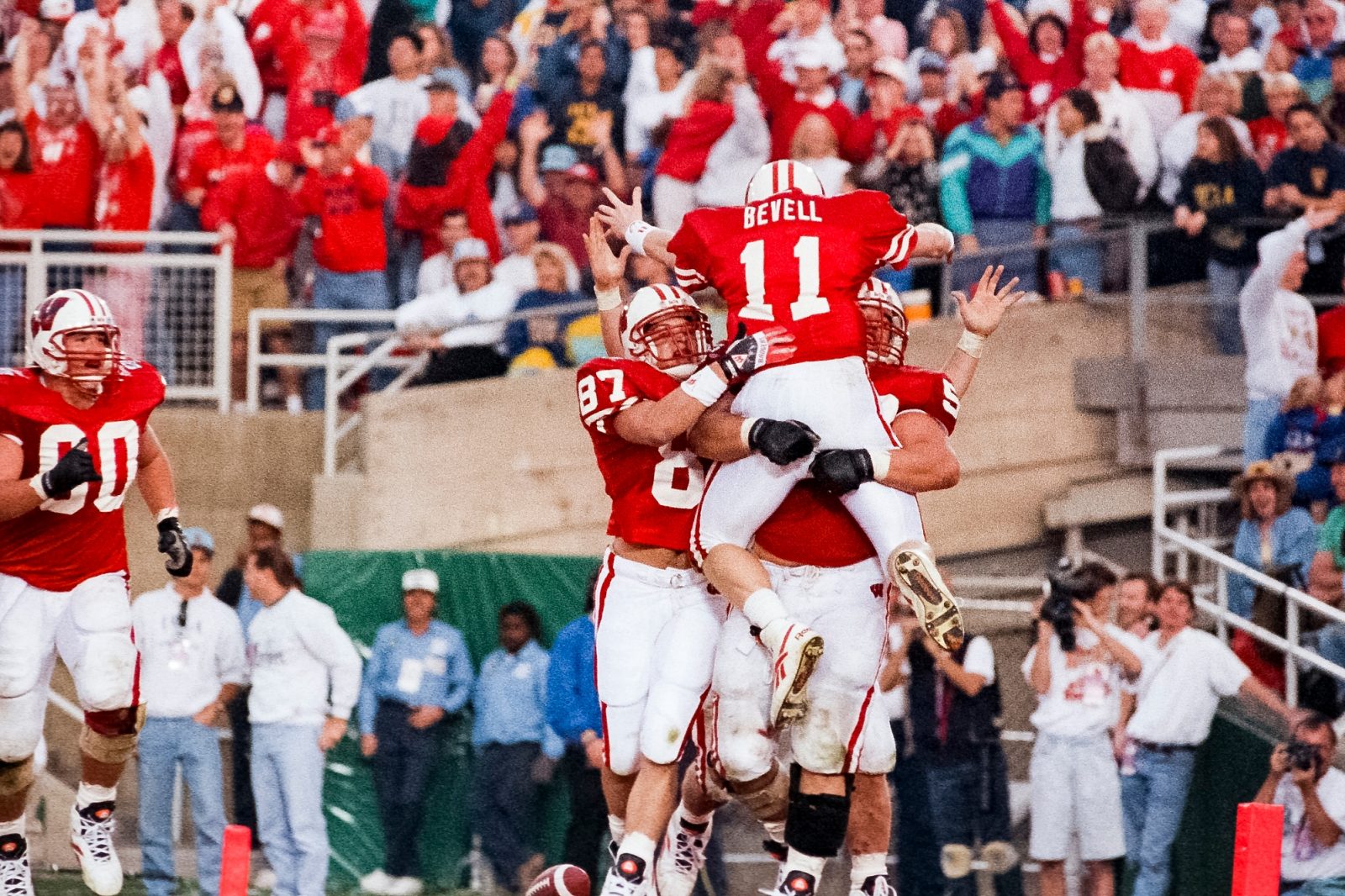
1994: Wisconsin 21, UCLA 16
After a three-decade hiatus – and many not-so-rosy seasons – the Badgers returned to the City of Roses in 1994. And for the first time in school history, they came away with the Rose Bowl trophy. Employing a run-first offense and hard-nosed defense, head coach Barry Alvarez had turned around the program from 1-10 in 1990 to 10-1-1 in 1993. That formula served the Badgers well in the Rose Bowl, where they ran for 250 yards and forced six turnovers. Wisconsin’s decisive score came from an unlikely source: slow-footed quarterback Darrell Bevell scrambling for a 21-yard touchdown (the celebration pictured above). “There was a guy there and I somehow made him fall down,” Bevell said. “I was laughing, the players were laughing at me, a television guy walks by and he’s laughing. … It was the most amazing play.” Some call it one of the five greatest plays in Badger sports history.
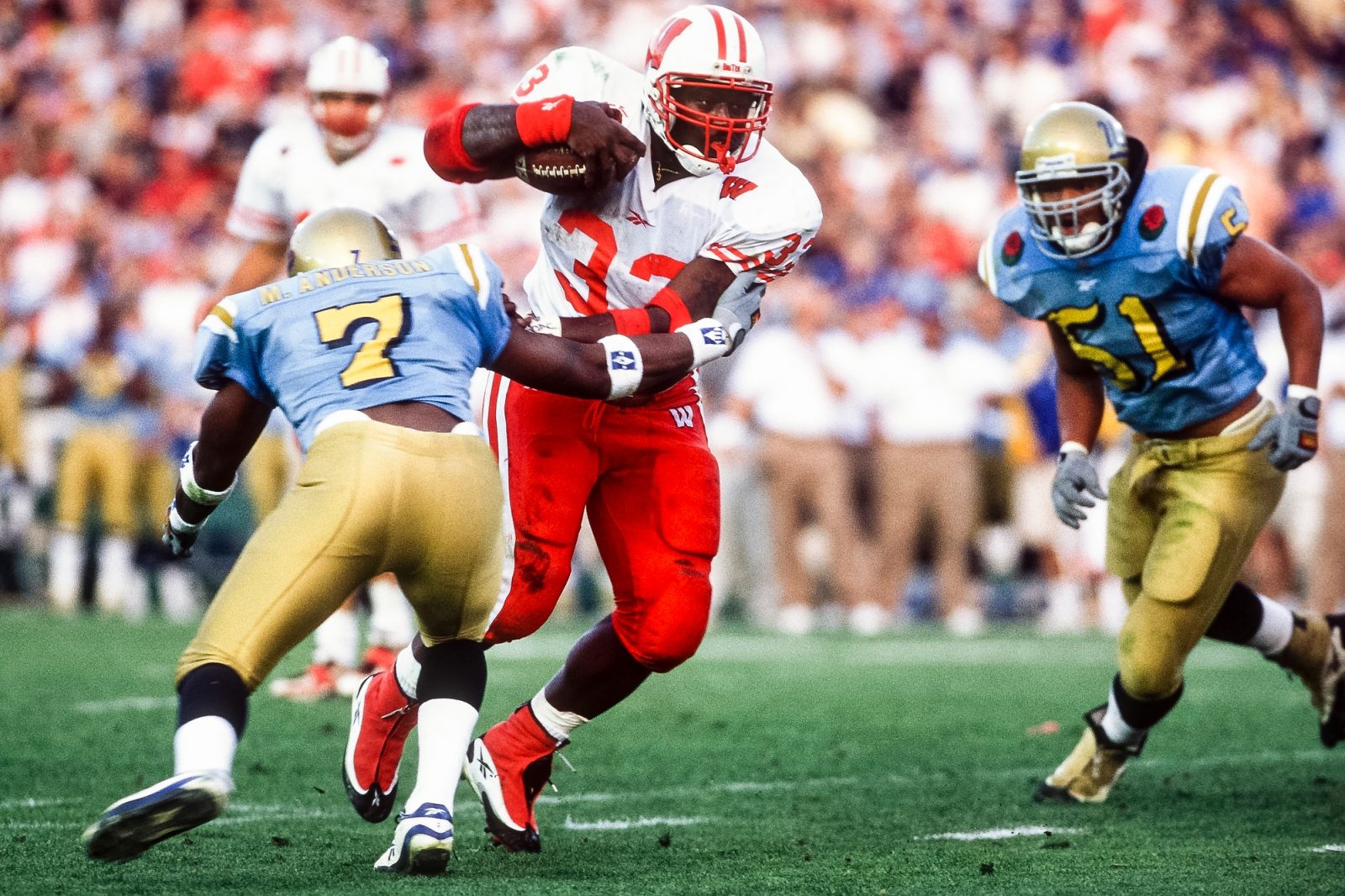
1999: Wisconsin 38, UCLA 31
America, meet Ron Dayne. The 280-pound back dazzled with his combination of power and speed, racking up 246 yards and a record-tying four touchdowns on the ground. The game was a classic clash of styles, with UCLA throwing for more than 400 yards and Wisconsin countering with nearly 350 yards rushing. The Badgers ceded a then-record 538 total yards to UCLA, but their bruising offense more than made up for it, averaging a whopping 7.6 yards per play. Dayne (pictured above) and the victorious Badgers would return to Pasadena the following season looking for a repeat.

2000: Wisconsin 17, Stanford 9
Repeat. In 2000, the Badgers became the first Big Ten team to win back-to-back Rose Bowls. After the prior year’s shootout, the team found a new way to win: defense. Wisconsin held Stanford scoreless in the second half while scoring two touchdowns of their own. Dayne (pictured above after the game) rumbled for 200 yards on 34 carries, earning the Rose Bowl MVP and becoming the only Big Ten player to do so in consecutive years. He won the Heisman Trophy leading up to the game, anointing him college football’s best player. This was the team’s last Rose Bowl victory – exactly 20 years ago.
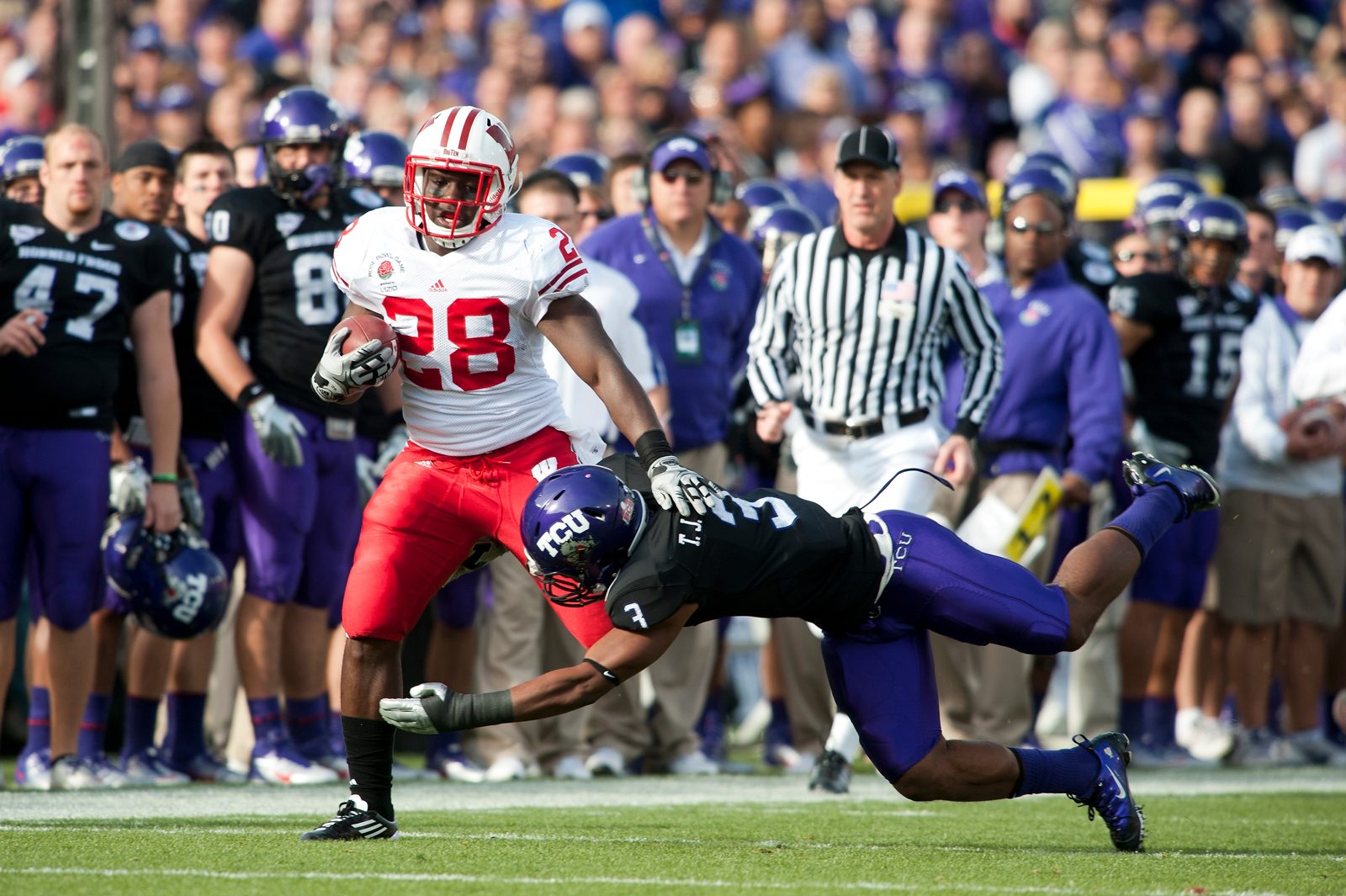
2011: TCU 21, Wisconsin 19
A decade later, the Badgers could smell roses again. The game started with a bang: Montee Ball dashing for 40 yards on the first play (pictured above). Wisconsin and TCU combined for 24 points in the first quarter – setting a record for the most in Rose Bowl history – but only scored 16 points the rest of the game. Ball ran for a touchdown with two minutes remaining to set up an opportunity to tie, but the Badgers’ two-point conversion failed and TCU ran out the remaining clock. Ball would go on to become the only player to score a touchdown in three consecutive Rose Bowls.
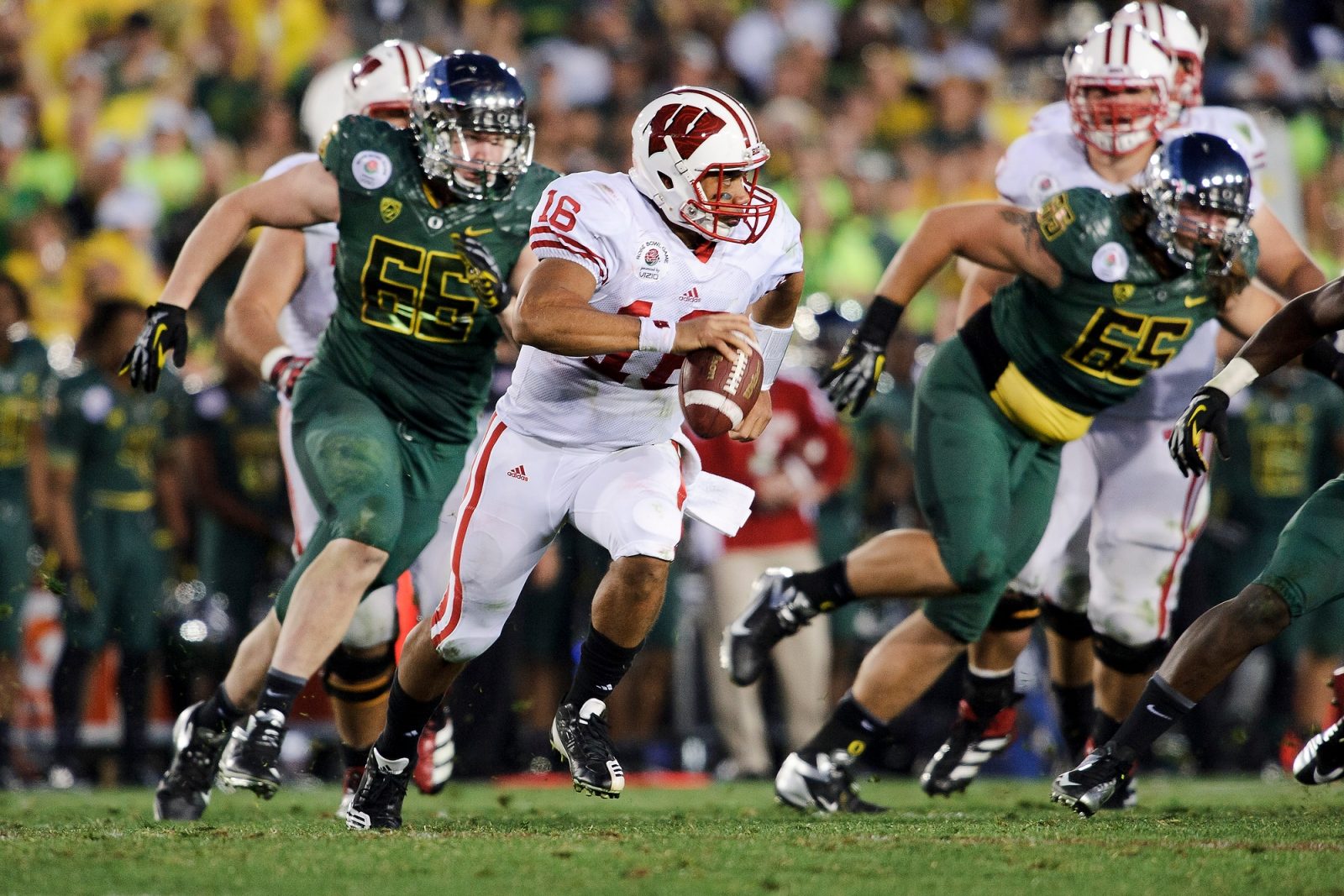
2012: Oregon 45, Wisconsin 38
Call this one the Russell Wilson Rose Bowl. The future NFL MVP (pictured above) captured the hearts and imaginations of Badgers fans in his lone season as Wisconsin’s quarterback, but the Rose Bowl trophy remained elusive. The contest was a thrilling shootout between two of college football’s best offenses – Wisconsin entered the game leading the Big Ten in points, while Oregon was among the top three highest-scoring teams in the country. (No surprise: they broke the first-quarter scoring record from the previous Rose Bowl.) The Badgers led 38-35 entering the fourth quarter but couldn’t keep up with Oregon’s speed, as the Ducks scored 10 unanswered points to secure the victory. The 83 combined points broke the Rose Bowl record.
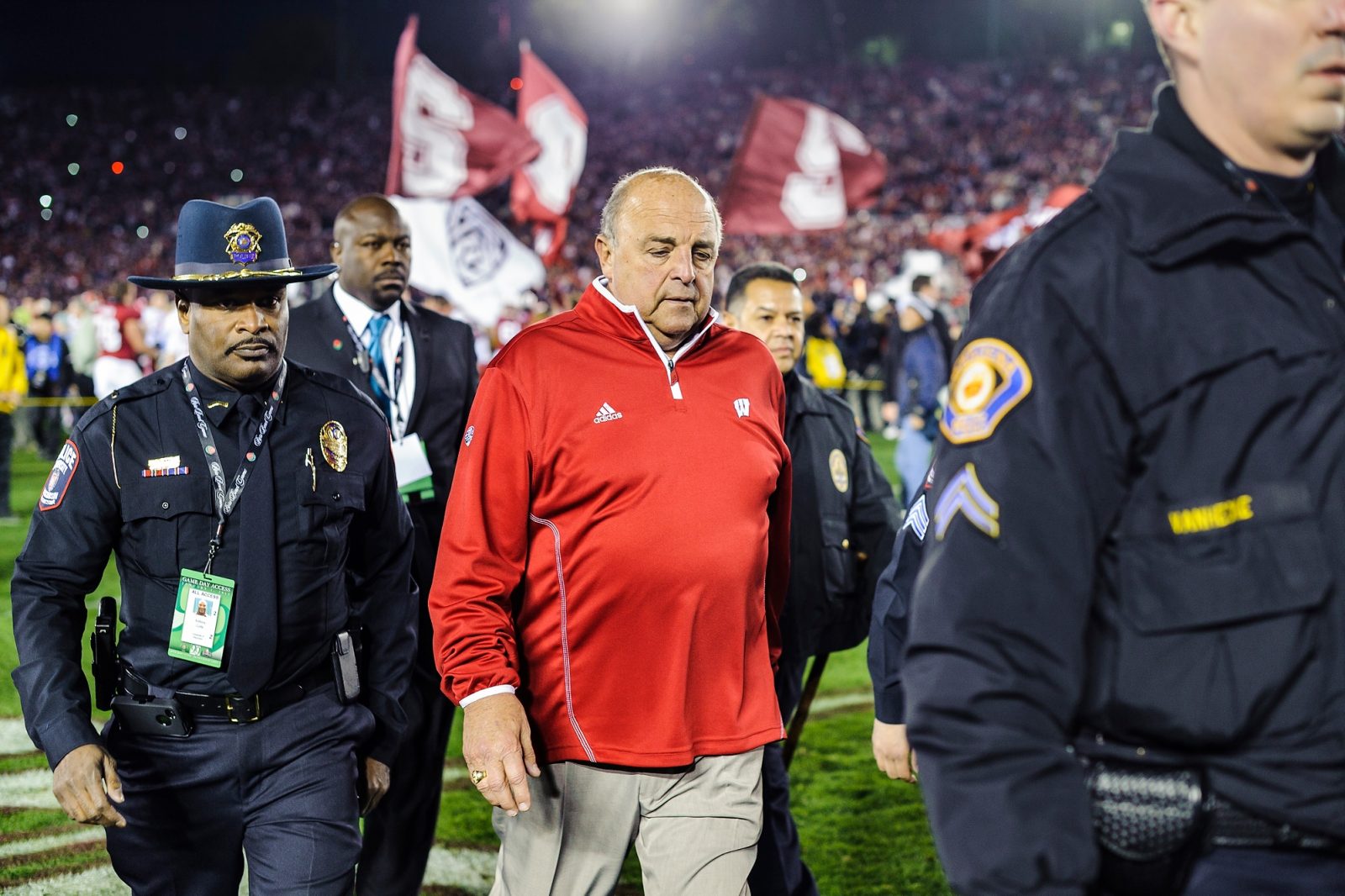
2013: Stanford 20, Wisconsin 14
Barry was back. Following head coach Bret Bielema’s shocking exit to Arkansas, Alvarez (pictured above after the game), by then the UW’s athletic director, returned to the field to lead Wisconsin and put his 3-0 Rose Bowl record to the test. The Badgers played inspired football but came up just short for the third straight year, losing 20-14 to Stanford. It was celebrated as Alvarez’s coaching swan song, but he actually returned to lead the Badgers in the 2015 Outback Bowl after Gary Andersen’s sudden departure. That team capped his coaching career on a higher note, with a 34-31 overtime victory over Auburn.